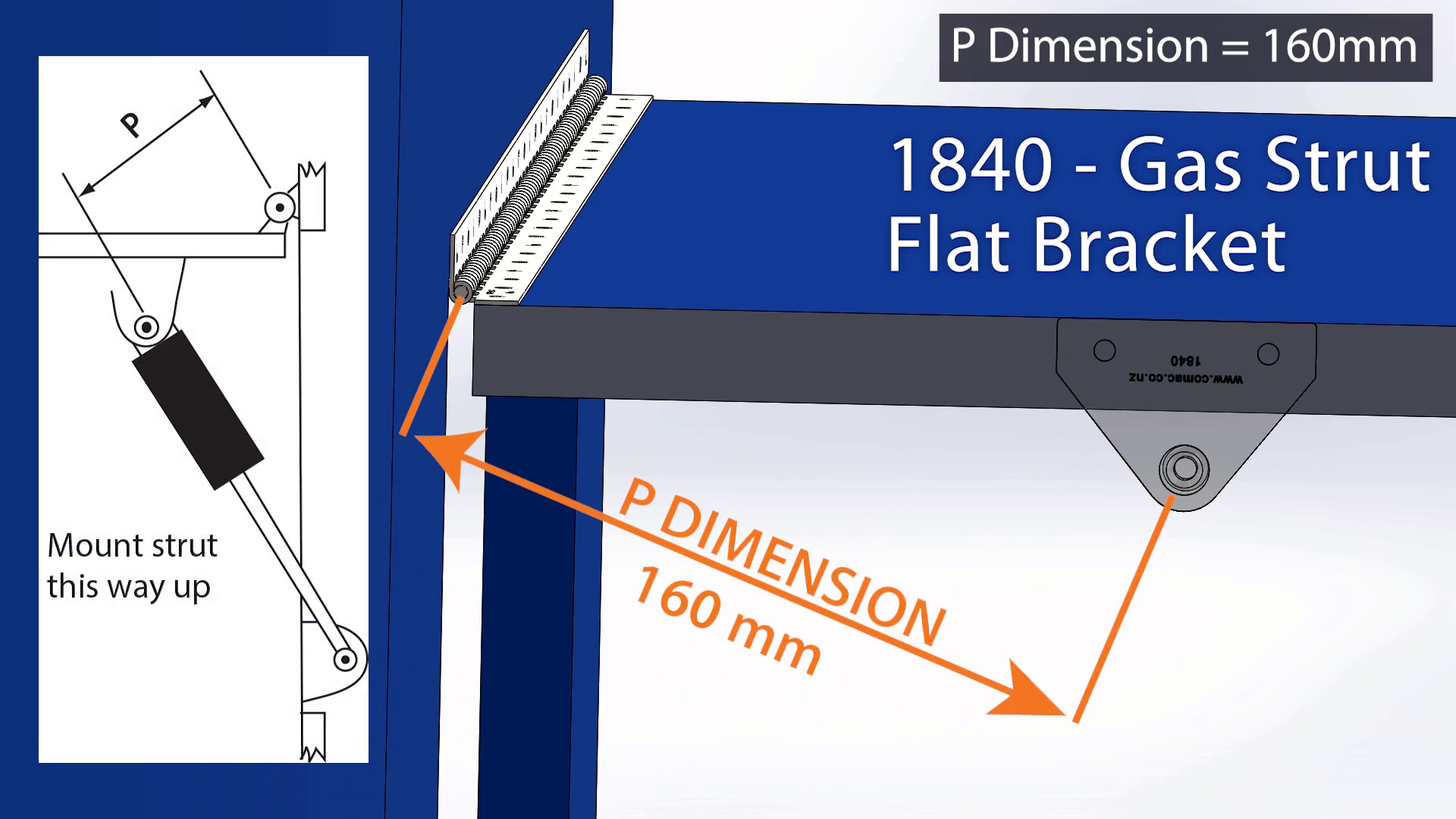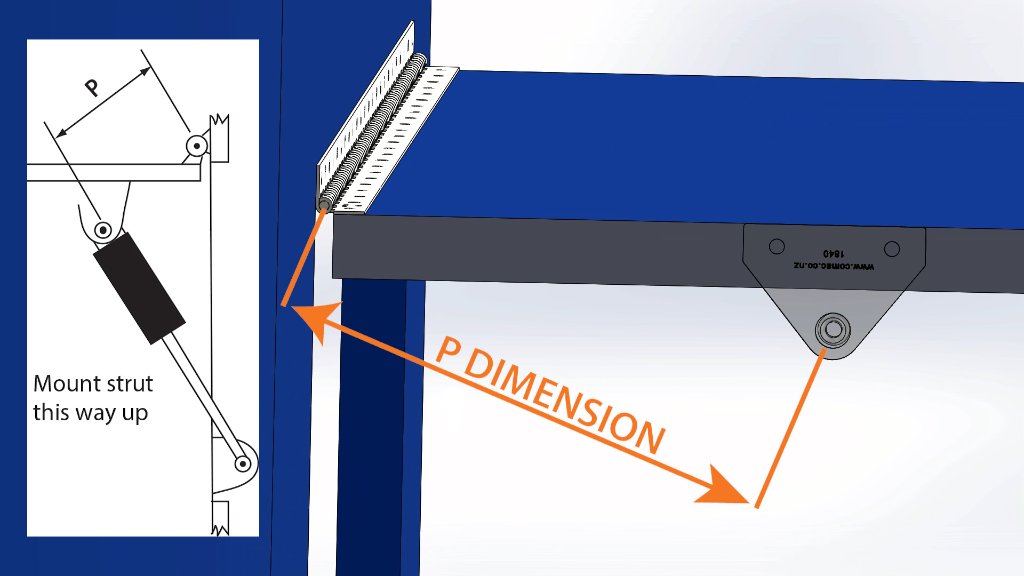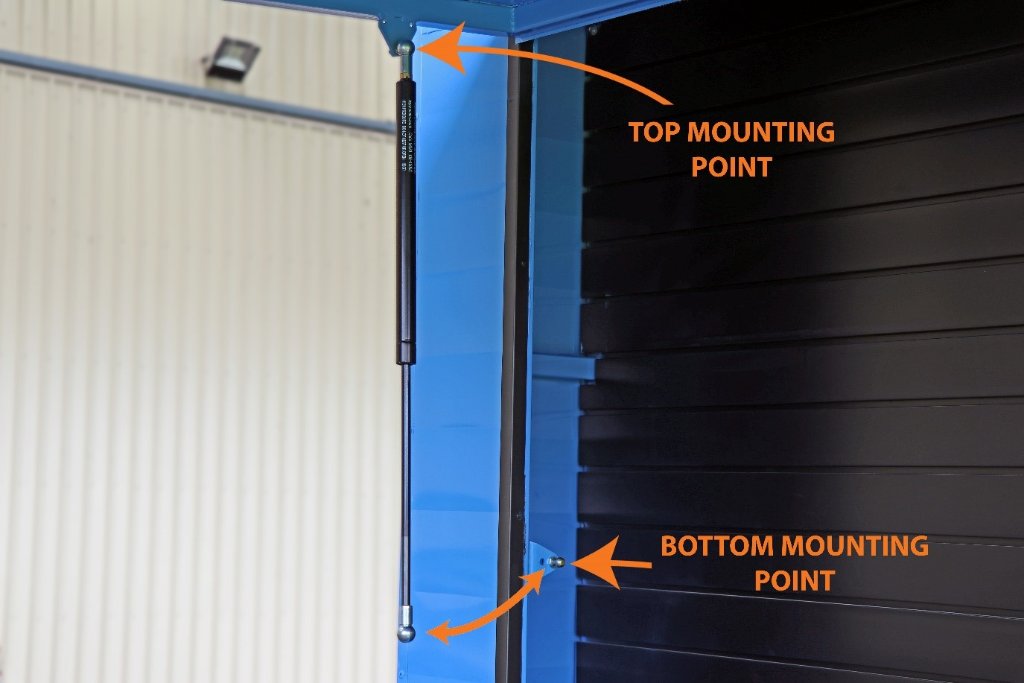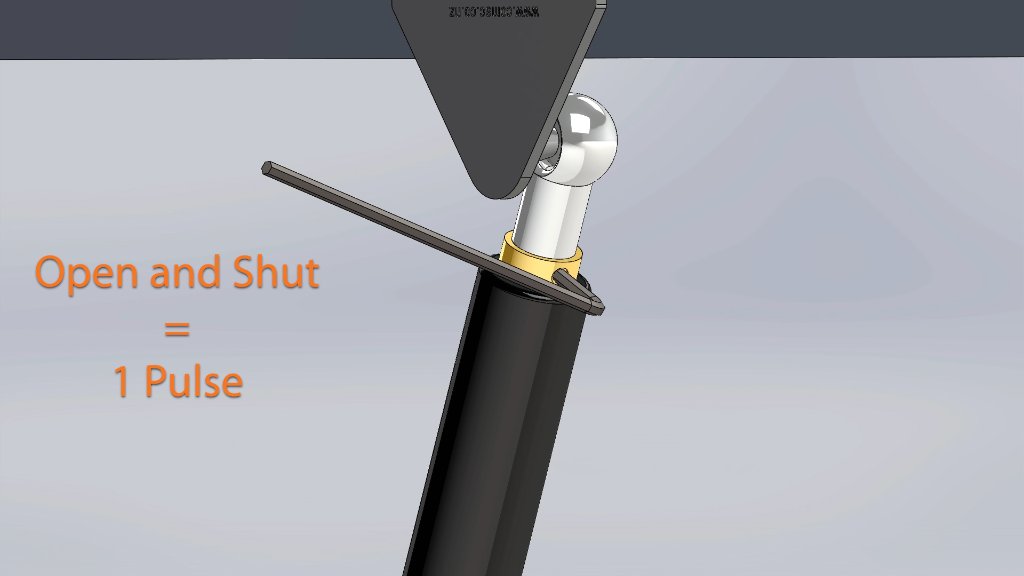Blog
Everything You Need to Know About Gas Struts
What are Gas Struts used for?
Gas Struts are most often used to assist raising and lowering of hinged doors, such as on a ute canopy or overhead cabinets. They are also used in many other applications such as in office and transportation equipment.

What Size Gas Strut Do I Need?
Gas Strut Calculator
Required strut extended length (mm):How to Measure Gas Strut Length?
I already have one and I want to find one with a similar length.
- Measure the extended length of your strut
- Match it with the extended length (G) in Co-Mac's range of gas struts.
- Because Co-Mac's gas struts are adjustable, you can calibrate them to what you need
Co-Mac's gas strut length is measured from the centre of the ball joint at each end. If you want to replace an existing gas strut, measure the length of your strut from the centre of each ball joint.
If your gas strut does not have ball joints, measure the length of the gas strut with no end attachments.

https://www.comac.co.nz/ gas-struts-adjustable- black-zinc-plated
If you cannot find a gas strut with exactly the same size, find the closest size up or contact us ask@comac.co.nz.
There should always be 2 gas struts installed per door. This ensures that equal weight is on each end of the door when opening. Having only one gas strut on a door can warp or damage your hinge.
Because of this it is also important to install 2 gas struts with the same length and pressure on both ends of the door. This means that both ends of the door open to the same height.
Gas Strut Installation Made Simple:

How To Choose and Install a Gas Strut
How to Install a Gas Strut?
Warning: Gas struts can be dangerous, please take all health and safety concerns and precautions into account when installing the gas struts.
Once you have found the gas strut in our range that will fit your door, it is time to install it.
- The first step is to carefully prop the door in the open position. For most hinged doors this will be 90° to the closed position.
- On the gas strut chart, you will see a length at 90° (P) Measurement. This is the distance from the rotation point of the hinge to the top mounting point of the gas strut.

- Mount the top of your gas strut at this point. It is important to mount your struts with the bigger tube at the top as shown above.
- Once the top of the strut is mounted swing the bottom of the gas strut to the side of the body as shown below. Using it to determine where your bottom mounting point should be. Mount the bottom of the gas strut at this point.

- Once the gas struts are in place it should be safe to remove the prop holding the door open. The gas struts should now be holding the weight of your door.
- Adjust the gas struts to suit the weight of your door. Co-Mac’s gas struts are adjustable, allowing you to let the pressure down until it suits the weight of your door.
Using the provided Hex Key, quickly open and shut the valve at the top of the strut. One open and shut equals one pulse. We recommend releasing gas in short sharp pulses. Remember to do the same amount of pulses on each gas strut on your door. Test regularly to see if the struts have reached the right pressure.

To avoid releasing to much gas we recommend adding a little weight to your door when adjusting the struts. Do 3-5 pulses on each side and test often to ensure you don’t let too much gas out of the strut. Remember, you can always let more gas out, but you can’t add it back in.
I have let too much gas out of my struts, what should I do?
If too much gas has been released from the struts, they will be too weak to open your door. If this happens you will have to send them back to Co-Mac to be re-gassed. We are only able to Re-Gas Gas Struts from our range.
My Gas Strut will not compress, what should I do?
If your gas strut will not compress you need to let more gas out of it. The pressure is too high for the strut to compress under the weight of the door.
If all the gas has been released out of the strut and it still won’t compress it is likely that your struts have been overextended. This usually happens if wind has wrenched the door open, forcing the piston of the strut past the safety ring and jamming the strut in the open position. If this has happened you will need new struts as overextended struts are not safe to use.
How to Calculate the Kg Needed In a Gas Strut?
If you want to calculate the Kg needed in a Gas Strut please follow the instructions on this free PDF

How to Calculate Kg Needed
for a Gas Strut
Latest Blogs
How to Build Security Sliding Doors for a Outdoor Sports Court? Outdoor Security Sliding Door Project Review. 5931 Beam Clamp Load Testing - Vertical Pull Test | Co-Mac Types of Gate Rollers for U Track: Which One is Right for You? Choosing the Right Hinge for Your Chiller: Rising vs. Non-Rising Hinges Understanding Different Shapes of Seals: A Comprehensive Guide Accelerated Salt Spray Testing of Rust Protection Zinc Paints Top 3 Lock Options for Sliding Doors and Gates Container Door Hardware: A Guide to Container Hinges, Locks and Seals Top Tips for Choosing Durable Sliding Door Hardware in New Zealand's Climate: Your Ultimate Guide Self Closing Gate Hardware In the Community: Picking Daffodils 3 Types of Drop T Latches 2022 Catalogue Coming Soon! How long will Linear Slides last? We tested them past 80,000 cycles - find out how they performed How Long Will a Gas Strut Last? Engineering Forces Explained: Tensile, Compressive, Shear and Torsion Co-Mac Boredom Busters - How We Did It Co-Mac Boredom Busters Is a Double Nut Better than a Single Nut? How much Better?











